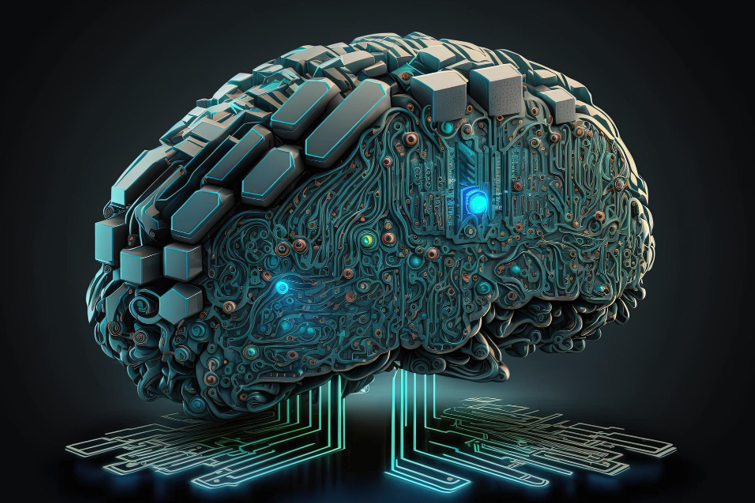CAVAA project – Counterfactual Assessment and Valuation for Awareness Architecture
The CAVAA project proposes that awareness serves survival in a world governed by hidden states, to deal with the “invisible”, from unexplored environments to social interaction that depends on the internal states of agents and moral norms. Awareness reflects a virtual world, a hybrid of perceptual evidence, memory states, and inferred “unobservables”, extended in space and time.
The CAVAA project will realize a theory of awareness instantiated as an integrated computational architecture and its components to explain awareness in biological systems and engineer it in technological ones. It will realize underlying computational components of perception, memory, virtualization, simulation, and integration, embody the architecture in robots and artificial agents, validate it across a range of use-cases involving the interaction between multiple humans and artificial agents, using accepted measures and behavioural correlates of awareness. Use cases will address robot foraging, social robotics, computer game benchmarks and human-generated decision trees in a health coach. These benchmarks will focus on resolving trade-offs, e.g. between search efficiency and robustness, and assess the acceptance of human users of aware technology.
CAVAA’s awareness engineering is accompanied by an ethics framework towards human users and aware artefacts in the broader spectrum of trustworthy AI, considering shared ontologies, intention complementarity, and behavioural matching, an empathy, relevance of outcomes, reciprocity, counterfactuals and projections towards new future scenarios, and to predict the impact of choices. CAVAA will deliver a better user experience because of its explainability, adaptability, and legibility. CAVAA’s integrated framework redefines how we look at the relationship between humans, other species and smart technologies because it makes the invisible visible.
The context
Following Thomas Nagel, conscious agents have an awareness of what it is like to be that agent. This first- person definition precludes a third person scientific pursuit leading to the, so called, hard problem or explanatory gap, with its pragmatic solution of distinguishing phenomenal from access consciousness. Conscious awareness can further be characterized in terms of its level, from coma to alertness, and content or quale pertaining to the distinction between the outside world and the self and the level of abstraction. In the face of these definitional challenges theories of consciousness have been emphasizing different non- exclusive aspects such as grounding in the self and sensori-motor contingencies, complexity, information access, prediction, attention, or meta-representations. However, none of these theories give any hypothesis on what the function of consciousness could be, let alone its role in future technology and artificial intelligence systems. Rather, the suggestions range from panpsychism to epiphenomenalism, or the realization of specific cognitive functions. Not surprisingly, the realization of aware machines is considered implausible.
The CAVAA project dissents from this position. CAVAA proposes that awareness has a specific function in the control of adaptive behavior which emerged during the Cambrian explosion: the ability to survive in a world governed by hidden states, especially those pertaining to other agents. Indeed, CAVAA proposes that awareness allows agents to decouple from immediate sensory states and deal with the “invisible”, ranging from behavioral policies in unexplored environments and unobservable aspects of tasks, to the complexities of social interaction that depend on the internal states of agents (e.g. intentions, knowledge, and emotions), and the moral norms that guide collective interaction action. Awareness thus reflects a virtual world which is a hybrid of perceptual evidence, memory states, and inferred “unobservables”, extended in space and time and which rests on five core processes: the ability to virtualize task spaces, to merge “real” and virtual elements into these internal models, to run parallel future-oriented simulations of possible world-self states, to collapse these into a single conscious scene which defines the content of awareness, and to use awareness to bias valuation and memory consolidation.
In realizing this goal, the CAVAA consortium will build on our growing understanding of the biological basis of awareness and its role in constructing the virtualized world models in which mental life occurs.

The objectives
The project will focus on setting up the data management plan, organize the data collection workflows, set up the ethical and legal framework, defining the requirements and specifications of the technology, and performing a patent and market analysis and lay the foundation for the CAVA architecture and its components, validation use cases and metrics, and ethics and legal aspects specifications. The main objectives of the project are :
– elaborate on this activity and ramp up the interfacing of the architecture to external systems and overall integration;
– deploying the use cases and validating obtaining the first results, subject to further analysis and the requirements update. These results will also identify possible limitations in the architecture and its components;
– update the architecture to make it a turn-key solution and advancing the most challenging benchmark tasks. The architecture and its underlying code will be packaged and documented for public release pending the objectives of the Small and Medium Enterprises for further commercialisation.

The results
The CAVAA project will develop a beyond state-of-the-art cognitive control architecture for advanced synthetic systems validated in spatial and social interaction tasks. The realisation of the CAVAA architecture advances state of the art in artificial intelligence, human-robot interaction, and neuroscience-based computing by delivering an integrated architecture and impacting several research domains: from theoretical and computational neuroscience and cognitive science to engineering, philosophy and social sciences. CAVAA’s five-level approach includes cognitive architecture, computing systems, machine awareness, embodiment, and conscious behaviour.

Partnerships and collaborations
The project is funded by the European Innovation Council (EIC) of the European Union, under the reference: EIC 101071178. It is a European collaborative project including the following partners:
– Radboud University, The Netherlands
– Centre for Research & Technology, Hellas (CERTH), Greece
– University of Technology Chemnitz, Germany
– Sorbonne University, France
– Eodyne, Spain
– Robotnik, Spain
– Uppsala University, Sweden
– Tp21, Germany
– University of Oxford, United Kingdom
– University of Sheffield, United Kingdom






